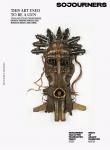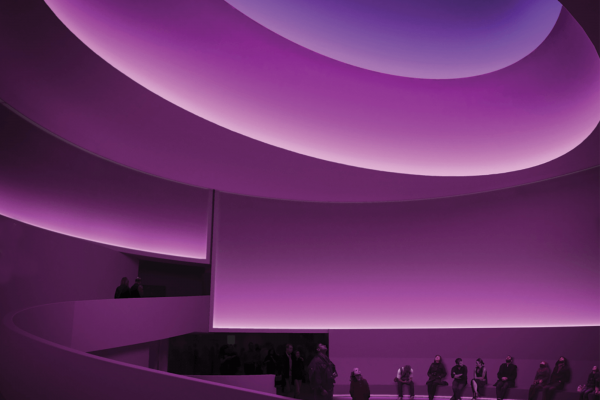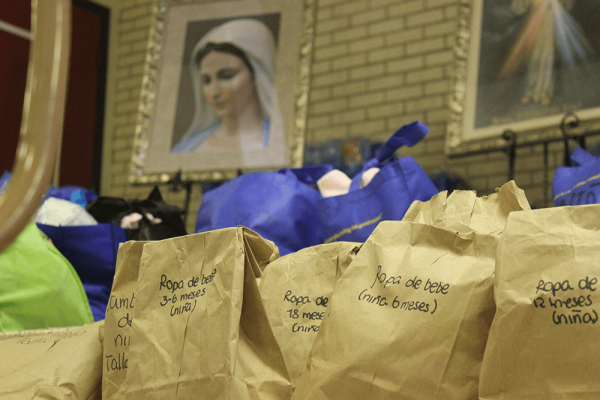A YOUNG WOMAN armored in her blazer, caffeinated and tethered to the phone line of a Manhattan hedge fund, hardly seems the optimal audience for an artist whose work hinges on stillness and contemplation. And yet—if you saw an enormous book of James Turrell’s installations perched on your desk, how could you not open it?
That was my reasoning as I re-encountered Turrell’s oeuvre, third cappuccino in hand. I didn’t know it then, but Turrell’s artistic framework would provide a new way to think about New York City. More specifically, his clarity of vision vis-à-vis light and space stands in contrast to a city replete with people the critic John Berger describes as “resigned to being betrayed daily by their own hopes.”
The city that allegedly never sleeps is wonderful in many ways, but by the end of my tenure there I was increasingly overwhelmed by the hustle, noise, and collective anxiety around, well, everything. Temping at a capital investment firm, while a welcome paycheck, was not my idea of meaningful work, and sitting like a bird in a glass tower, detached from the people below, even less so. Reaching for Turrell’s book, which was likely deemed politically neutral enough for an office setting, was an act of desperation and belief that I could still be surprised, awed even. And I was.
Turrell first came onto my radar four years ago, when quotations of his work appeared in a music video by the rapper-singer-songwriter Drake. I’d never seen anything like it: rooms awash with geometric splashes of light. What Turrell is most famous for, however, are “skyspaces.” Usually a room, either attached to a larger building or solitary, a skyspace features a precisely cut square in its roof that allows you to view the sky above.
Several Quaker meeting houses feature Turrell’s work because he grew up in that tradition. In fact, he has a piece titled “Meeting,” a callback to his Quaker upbringing. This installation at MoMA PS1, an exhibition space in Long Island City affiliated with The Museum of Modern Art, was closed for six months this year, due to a construction company’s infringement into the space with scaffolding that ruined the clarity and purity of the sky. These artistic quibbles seem like the province of eccentrics, but as Long Island City continues to gentrify, Turrell’s adamance is a gift.
In an often cluttered and imprecise artistic landscape, Turrell’s work is deeply invigorating. His dedication to manipulating elements that have no material trace, like light, and limiting what the viewer sees while leaving the experiential component up to chance, creates the opportunity for beauty and chaos. Most of all, in a city predicated on staid conceptions of power, Turrell’s skyspaces allow the opportunity for something like democracy, a chance to be amazed by the world we live in. Maybe a jittery 23-year-old is the perfect audience for such work after all.

Got something to say about what you're reading? We value your feedback!







